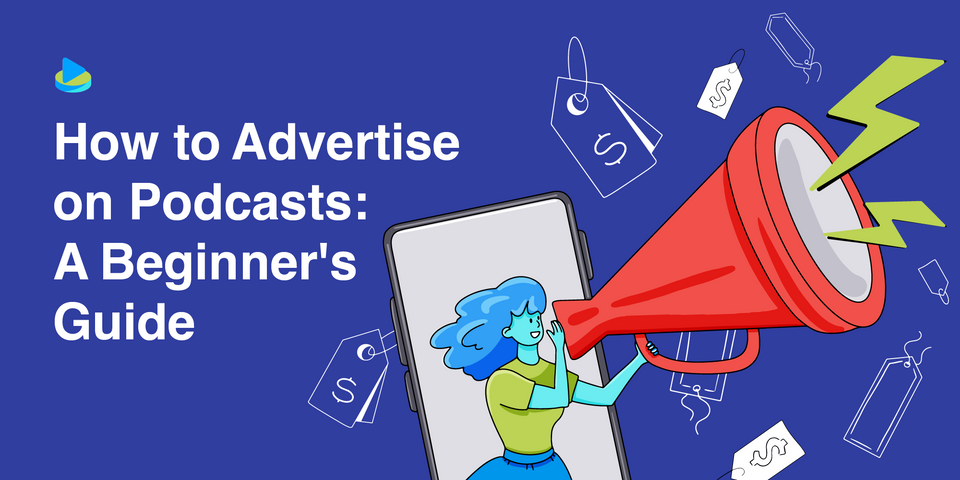Do you want to drive more customers to your product or business?
Podcasts are a fast-growing marketing channel and tend to reach an affluent, educated audience. Perhaps you know all about the trust factor created when listening to podcasts because you're a fan yourself and understand how powerful they can be.
But how do you find suitable podcasts to advertise on? And how do you create a winning pitch? What should you even put into your podcast ads?
We've laid out the six steps you should follow to successfully advertise on podcasts and generate a high ROI.
Table of Contents
1. Find podcasts that align with your brand
Podcast advertising campaigns have proven themselves to be popular and effective. That's largely because you can target very specific audiences. Many podcasts cater to a niche audience of super fans happy to act on host-read ads and recommendations.
So, it makes sense to align your brand with relevant podcasts that share your values and speak to the podcast listeners you want to get in front of. (We've got an article filled with ad examples from the experts to show you how it's done.)
Example: Manscaped's podcast ad on the Viall Files
Manscaped sells male grooming products, but the Viall Files has a mainly female audience.
So, when its host-read ad aired in February it appealed to the audience with lines like: "Valentine's Day's coming up and ladies if you're looking for the perfect gift for your man..." and "Manscaped is making it so much easier for your man to look his best."
The humorous ad runs through the many ways Manscaped products work for men - and why their women should buy the platinum package for Valentine's Day.
If you're like Manscaped and want to take advantage of all that podcasting has to offer the next question is, what's the best way to find podcasts that align with your brand?
Use podcast apps
You could look through various podcast apps including Apple Podcasts and Spotify, searching categories or putting in keywords to see what comes up.
Do a Google search
Or you could try searching on your favorite search engine, wading through social media or asking ChatGPT. Try Googling combinations like "best (your keyword e.g., gardening) podcasts," "successful gardening podcasts on Spotify," or "best gardening podcasts UK."
Use Rephonic
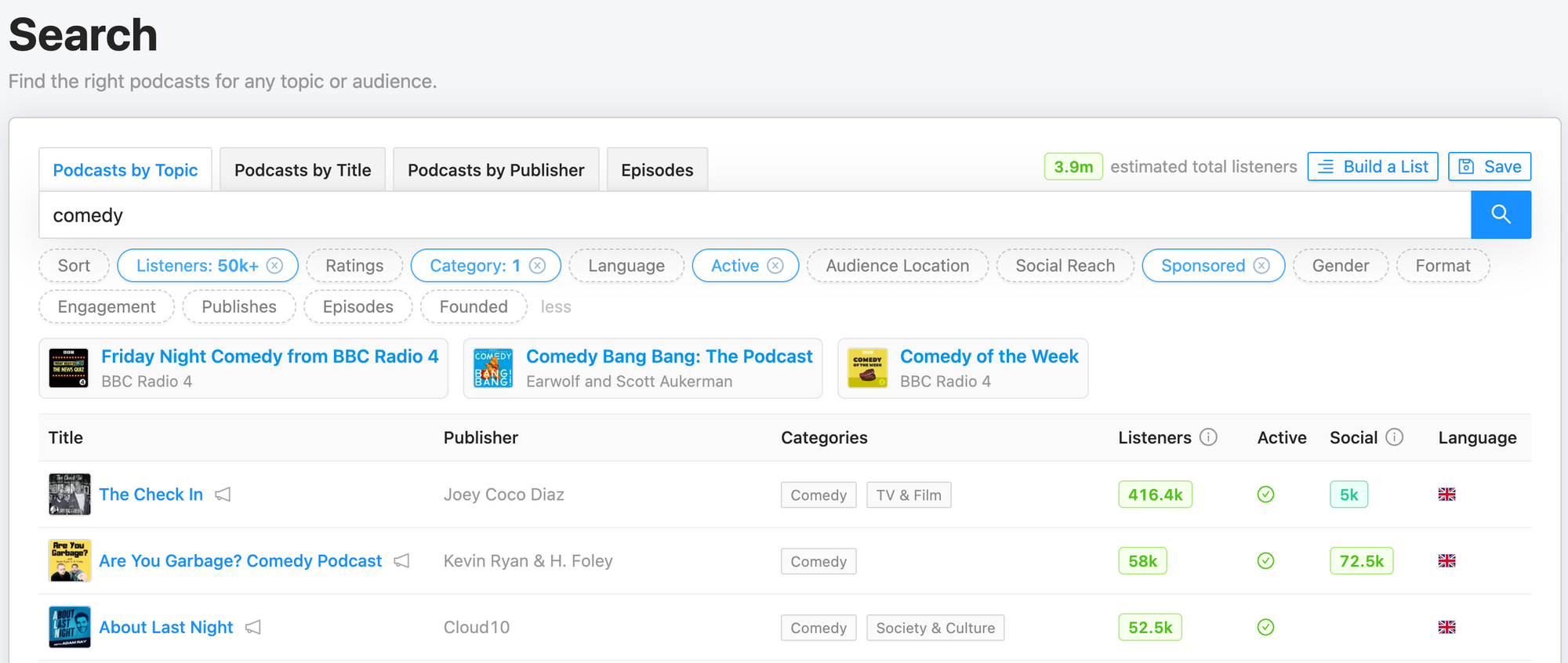
Rephonic is a podcast database and search engine that locates and lists podcasts that match your criteria before you have time to snap your fingers.
- Insert your search terms or categories,
- Add some filters (e.g., specify audience size, language, location etc.)
- Select Sponsored (podcasts that accept advertisements or sponsors)
- Select Active (to see only podcasts that have dropped a new episode in the past 45 days.)
Bonus tip - think outside of the box
Investigate related podcasts using our handy 3D graph. Clicking on any icon brings up its podcast summary and links.
2. Check the podcast's stats
You can tell a lot about whether a podcast will suit your brand by investigating the stats. You can find most of this information with a manual search, but Rephonic gathers information from hundreds of publicly available data points on each podcast and presents it on our podcast page.
That means you don't need to spend hours hunting for information; Rephonic puts it all at your fingertips.
So, what stats should you be researching?
Listener numbers
It's particularly helpful to understand listener numbers when researching a podcast. If you have a small budget and are just testing the waters, you'll want to target smaller podcasts that are also starting out or have a very niche audience.
However, if you have more cash to invest, you might look for larger shows that reach a bigger target audience.
Skip to the section about how to estimate podcast ad costs.The only way to get exact figures is by reaching out to the podcast host, but there are many other ways that you can see roughly how many listeners a podcast has.
Checking out the number of ratings and reviews, chart rankings or their social media following are some of the ways you can do this manually, but you can view estimated listener numbers on Rephonic at a glance.

You can also use Rephonic listener trends feature to establish whether the podcast audience is growing, holding steady or declining.
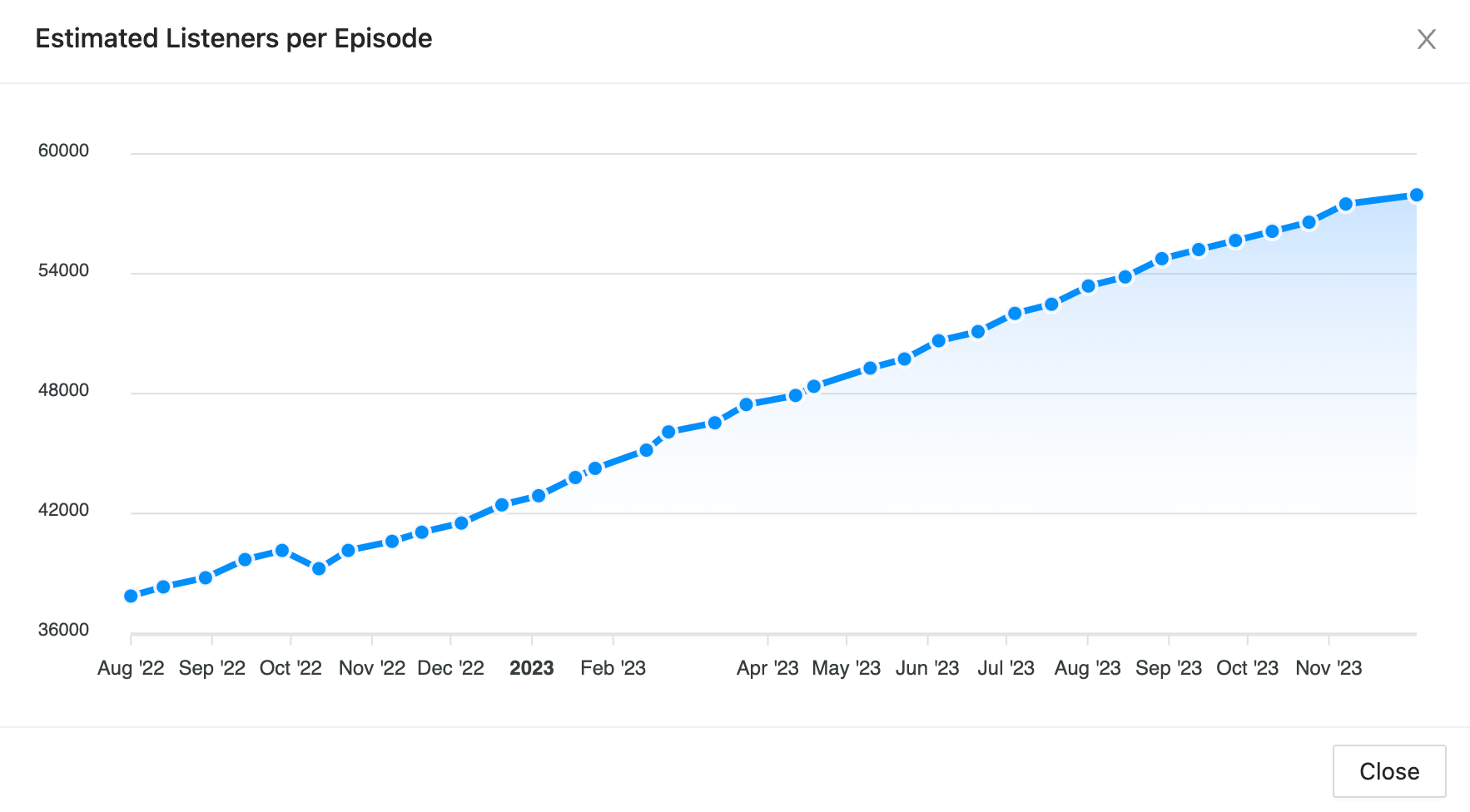
Engagement rates
If the audience doesn't currently take any action like leaving a review or rating the show, don't be surprised if they don't buy your product or service after hearing your ad. Getting in front of an engaged audience is vital to running a successful campaign.
You can get an idea of audience engagement rates by visiting Apple Podcasts and Spotify, or you can use Rephonic.
We look at new listener reviews and ratings growth over the past 180 days. The result is a score between 0-100, which indicates how engaged the audience is with the show. A high green score can indicate a motivated audience, whereas a low red score could mean the audience listens but doesn't feel the need to comment.
Audience location
Where most of the audience lives is also a key metric if you target particular countries. For example, if you sell predominantly in the UK, you might not sponsor podcasts with mostly American audiences.
If the podcast has a website, they might provide this information on there. But if not, you can either reach out to ask them or check out the audience location data on Rephonic.
You can filter your podcast search by audience location, which can be a great time saver when targeting an audience by country.
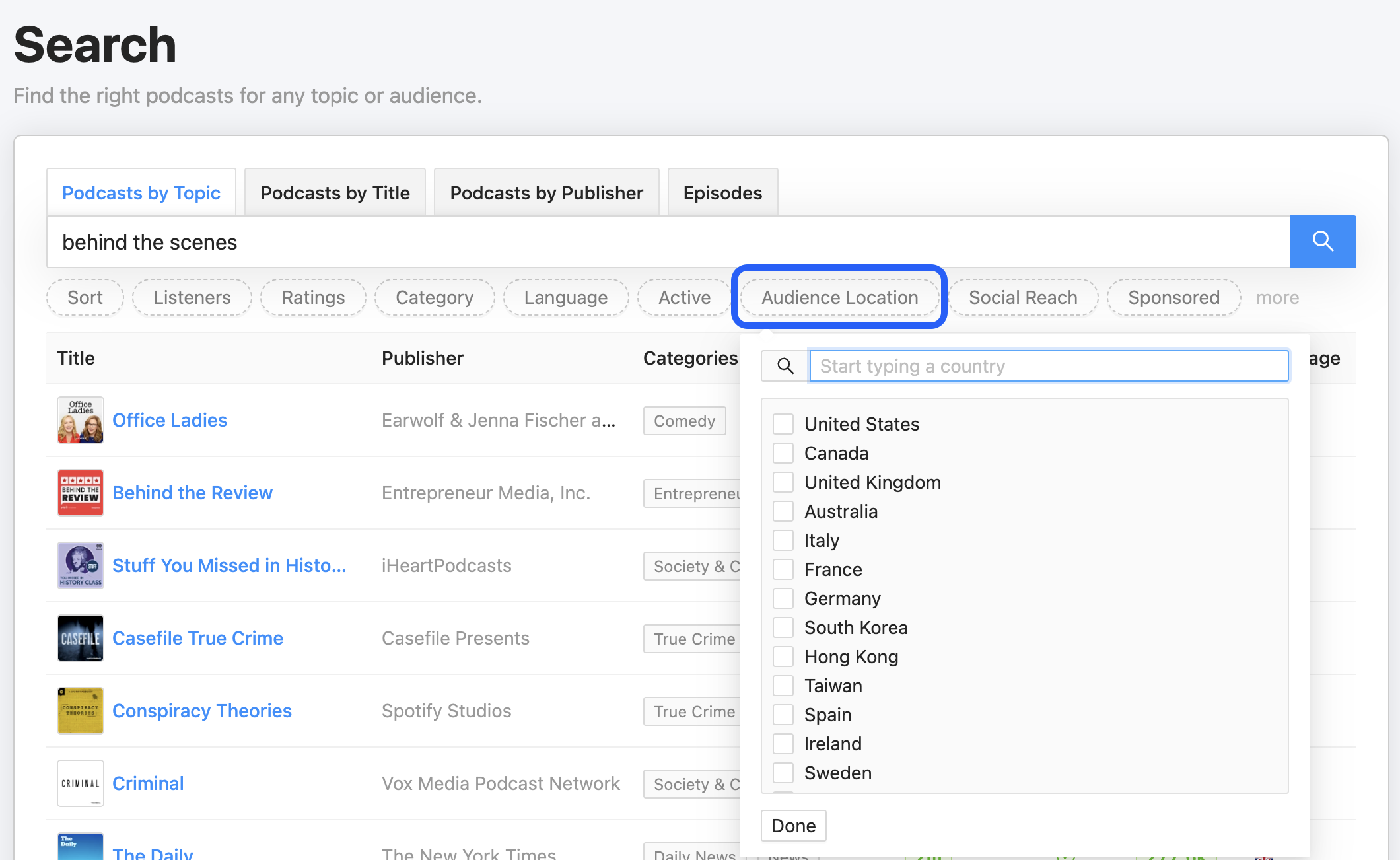
Social reach
Podcasts tend to repurpose episodes for social media, so that can be an excellent way to boost your exposure. Many podcast hosts also have YouTube channels and publish shorts to attract new listeners as well as capturing the attention of current fans.
Knowing if the podcast audience hangs out in the same social media space as your brand is also helpful. That's another way to reach them after your podcast ads go live.
When researching a podcast, see if they have their social media accounts listed on their website. Or access them directly on Rephonic. You'll find links to its social media channels and the follower numbers.

Ratings and reviews
While our engagement score measures the growth in ratings and reviews, you might want to know what reviewers are saying or what the average rating is. After all, a lot of new reviews isn't always a good thing!
You could check them out by visiting podcast apps one by one, but it's much easier to access reviews through our Feedback section.

Gender skew
If your target audience is women, you might search for podcasts where our info suggests that the audience is predominantly female. But understanding gender skew also helps when writing your ad copy.
For example, you might pitch a men's grooming product as the "perfect Christmas gift for your man" in podcast ads to a female audience. But you'd write a very different ad for the same product when inserting podcast advertising into a male-dominated show.
There are two main ways to access this information, either directly from the podcast host or on Rephonic.
Chart rankings
Where a podcast sits in the Apple Podcasts and Spotify chart rankings can also indicate its popularity amongst different audiences.
If a show ranks on either of these two podcast apps, Rephonic lists it on the podcast page.
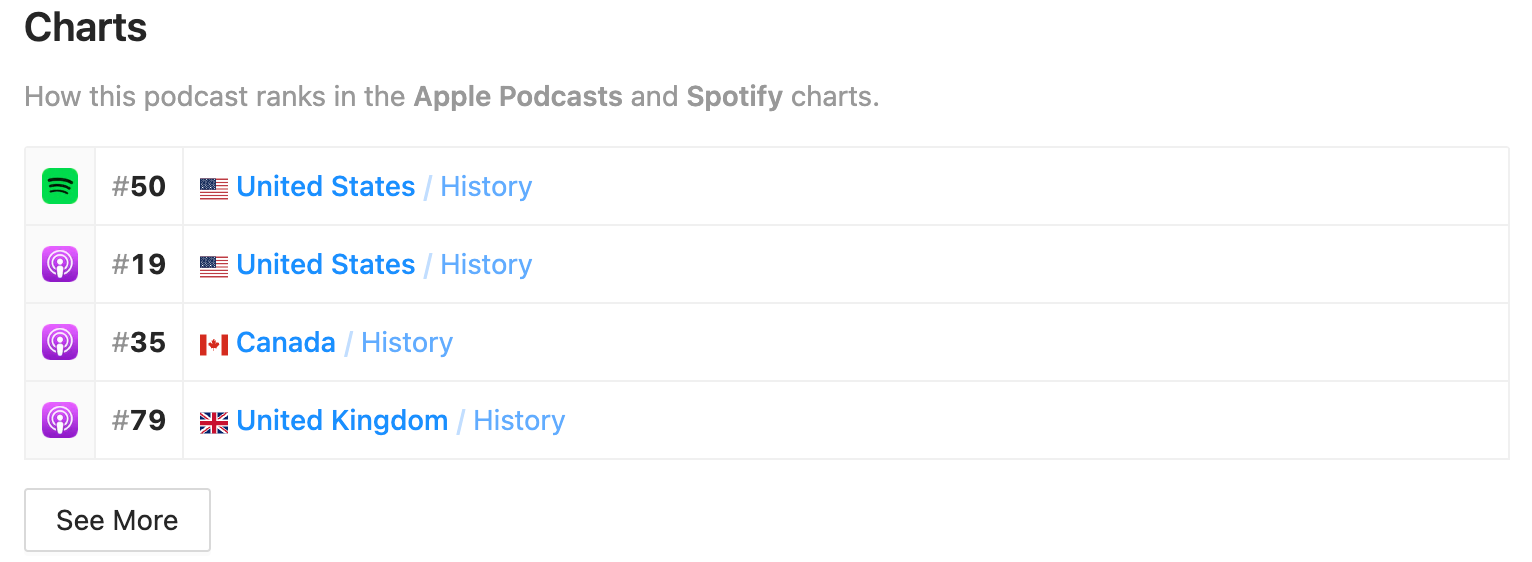
We wouldn't put too much weight on chart rankings though as other podcast stats are much more important.
3. Make sure it's within budget
Businesses usually spend between 2% and 10% of their revenue on marketing, including website, social media and advertising. That means there's no point in pitching a show that charges way above your ad spend budget.
But how do you find out which shows you can afford?
Some podcasts have "sponsor us" or "work with us" landing pages. That leaves no room for speculation - you'll immediately know whether your ad spend budget can stretch to that podcast.
But how can you work out if you can afford a podcast that doesn't disclose its ad placement rates?
Calculate the cost yourself based on popularity
You can do some quick math and work it out based on listener numbers (if you know them.).
The standard cost per thousand listeners (CPM) in podcasting is between $18 and $25. Then, multiply them by the number of listeners. For example, if Podcast A has 10,000 listeners, the ad cost range is likely between $180 (10x18)and $250 (10x25).
Check estimated ad costs on Rephonic
If you’re using Rephonic, we’ve done the hard work for you. We publish the estimated the cost per ad for almost every show in our database.

If our estimate is within your budget add the podcast to the list of shows you plan to pitch.
From the podcast page, tap 'Add to list’ then ‘Create a new list’. Add more shows to your list and use it to keep track of where you are in the pitching and sponsorship process with them.
4. Determine your ideal ad type and delivery method
You may already have a preferred style for your podcast ad. If so, that's something to consider when choosing a show. There's no point in pitching a show that only broadcasts host-read ads when you want to write and pre-record them yourself.
Many shows prefer one ad type and delivery method, so that's something to discuss when you're making arrangements with the podcast host.
Here are the options:
Programmatic/prerecorded/supplied
Choose programmatic ads if you want to supply your podcast ads ready-made. Programmatic ads are a bit like radio ads. They're written by the advertiser and pre-recorded (often using voice actors, music etc.)
Host-read
Use host-read ads when you want to take advantage of the podcast host as an influencer. Host-read ads can sound more genuine than supplied ads, especially if the host has used your product and can make a personal recommendation.
Live-read
Host read podcast ads can be recorded live during the show or pre-recorded and inserted during ad breaks.
Ad slots come in three places:
- Before the show starts (pre roll ads)
- During the show (mid roll ads) and
- At the end (post roll ads).
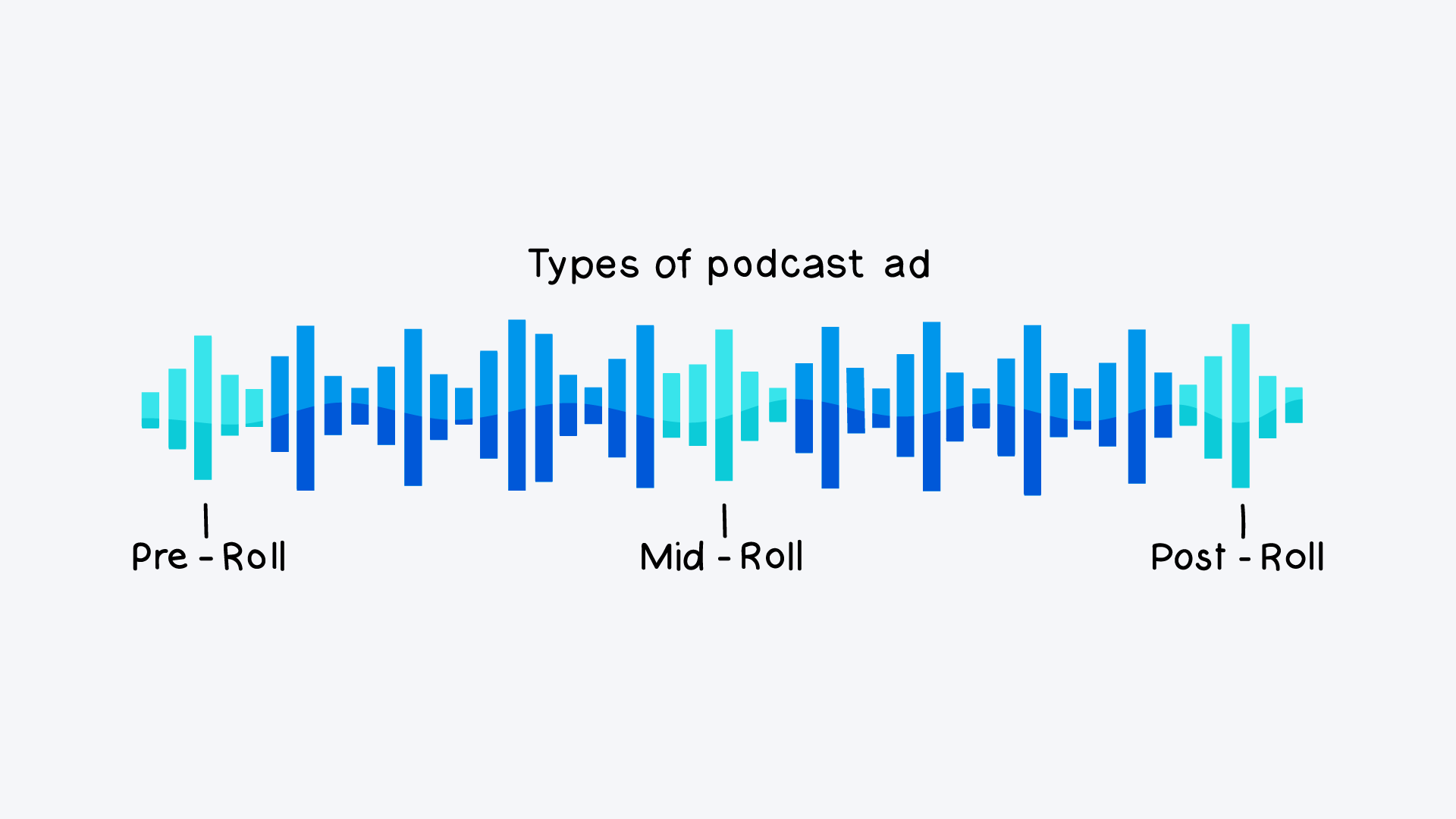
Pre roll ads and mid roll ads usually cost more than post roll ads because people are more likely to hear them.
Baked-in ads
Baked-in ads are recorded in the podcast episode and stay there forever. The only way to change them is to re-record that part of the episode.
New listeners often binge-listen to catch up when they find an established podcast, and podcast hosts often refer back to past episodes (especially if they're teaching or informative podcasts.) So, the advantage of baked-in ads is that your product is featured whenever someone accesses that episode in the podcast's back catalog.
Dynamic ads
Dynamic ads are separate audio files that can be inserted into ad placement slots within a podcast. They usually run for a preset number of ad impressions or days. So, once the podcast ad reaches its limit, a new ad moves into that slot, which keeps the ad content fresh and up to date in the back catalog.
5. Pitch the host
Once you've decided to reach out to certain podcast hosts, you'll need their contact details. Some people reach out on social media, but we feel that email pitches are best.
You could try searching for the podcast host or the podcast's website with Google, Bing or other search engines and hope that the website includes contact details.
Hunter
Google also has Hunter, a Chrome extension tool for finding email addresses. Visit the podcast website then click the Chrome icon to bring up all related email addresses.
Rephonic
Rephonic lists contact details for almost every podcast, and if you can't find what you're looking for you can ask our Concierge team to find better contacts for you at the click of a button.
Once you've got the right contact info, it's time to nail your pitch. Rephonic lets you draft a pitch for any podcast on your lists. You can use our proven pitch template or write your own email and save it as a template for other pitches.
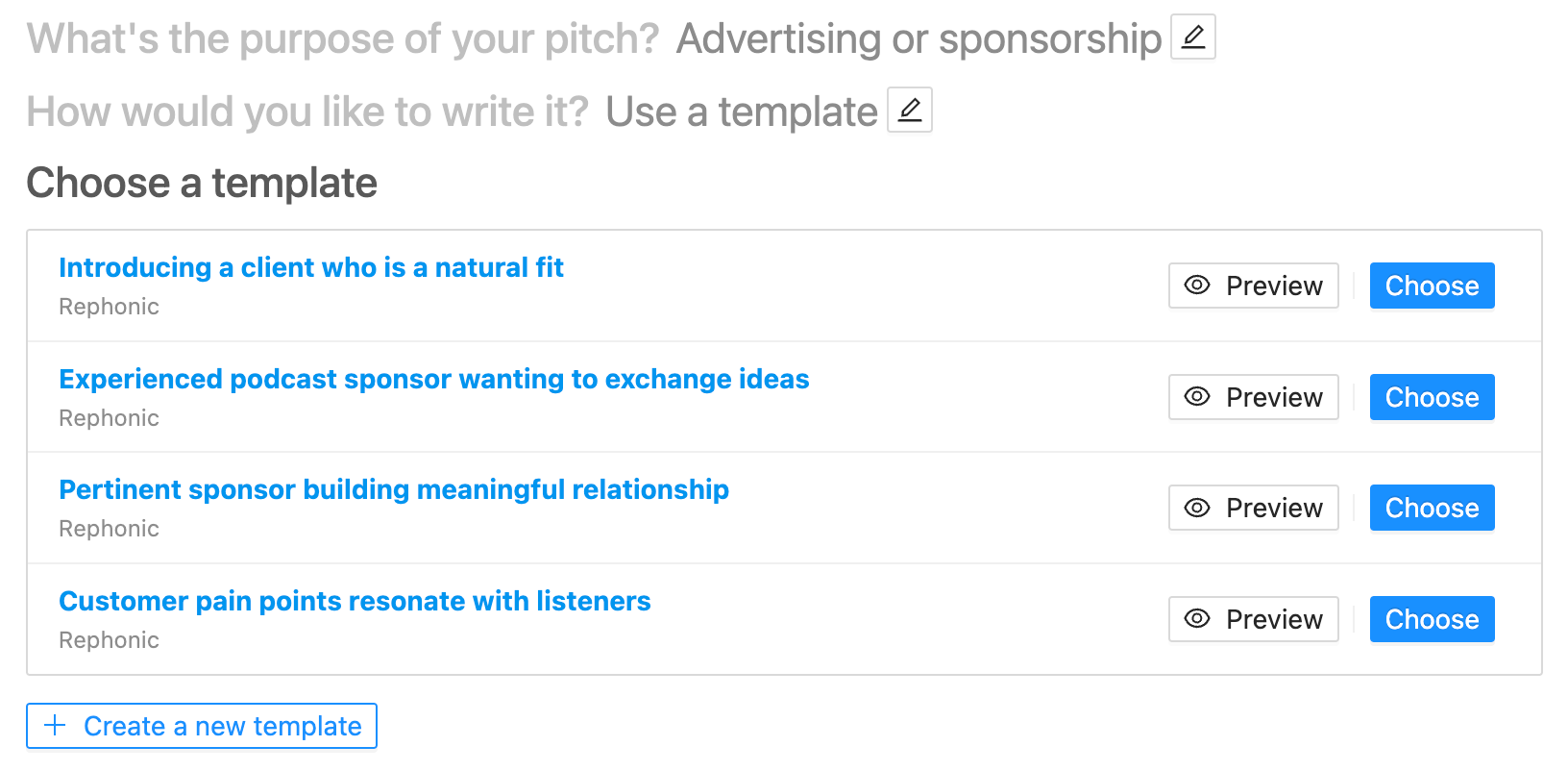
First, listen to several episodes to understand the podcast and how the episodes go. That lets you personalize your podcast pitch by mentioning parts that captured your attention.
Highlight what you have to offer and why the podcast audience would be interested so the host can immediately see you as a good fit.
Send your pitch, and mark it as pitched in your list. Send a follow-up email if you don’t hear back in a few days.
6. Write your ad
Effective podcast advertising starts by understanding what you want people to do after they've heard your ad. Once you know that, you can start writing.
There are many ways to structure podcast advertising, but here's a guide to one of the most popular, as modelled by Betterhelp.

Hook
First grab the listener's attention so they'll be receptive to the ad's message.
E.g."There are things to be gazelle-intense about. Making healthier choices, getting out of debt for sure. But when it comes to giving people what they need from you, it's better to be intentional, not intense."
Pain point
Then talk about what’s inconveniencing them the specific problem they're facing that your product or service can solve.
E.g. It's easy to get caught up in what people need from you and never give a thought to what you need. So how do you balance the two?"
Benefits
List the benefits they'll get when they try your product.
E.g. "It takes practice and therapy is a great way to learn new skills like balance and setting boundaries that allow you to have enough energy left for others without leaving yourself behind."
Call-to-action
Finally spell out the action you want them to take, whether that's visit your website and make a purchase, download something or something else entirely.
E.g. "Find more balance with Betterhelp. Visit betterhelp.com/deloney today to get 10% off your first month. That's betterhelp h-e-l-p .com/deloney."
Then, when your podcast ad is ready, send it to the host and monitor the results once it’s live!
Final words
Now you know what it takes to run a great podcast ad campaign, it's time to get going.
You could go about it the hard way and research everything manually. Or make the most of your time and effort by signing up for a seven-day free trial with Rephonic.
Start researching your next podcast ad campaign with Rephonic.

